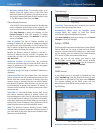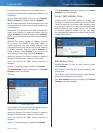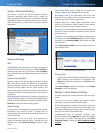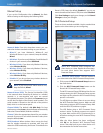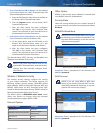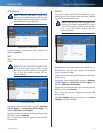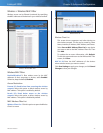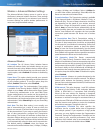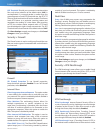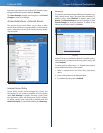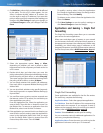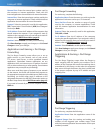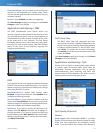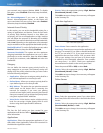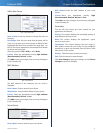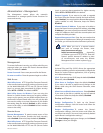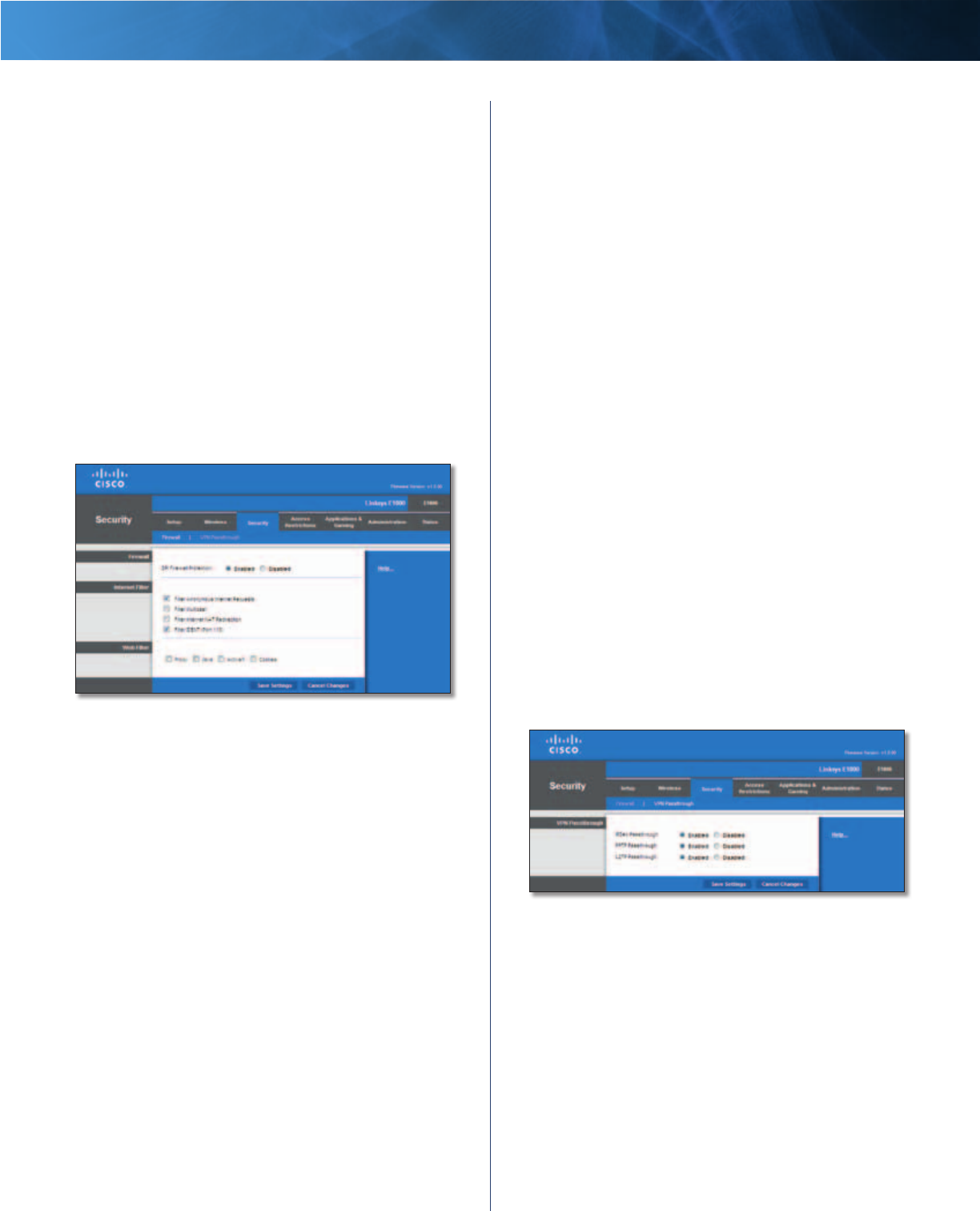
25
Wireless-N Router
Linksys E1000 Chapter 3: Advanced Configuration
RTS Threshold Should you encounter inconsistent data
flow, only minor reduction of the default value, 2347, is
recommended. If a network packet is smaller than the
preset Request to Send (RTS) threshold size, the RTS/CTS
(Clear to Send) mechanism will not be enabled. The Router
sends RTS frames to a particular receiving station and
negotiates the sending of a data frame. After receiving
an RTS, the wireless station responds with a CTS frame
to acknowledge the right to begin transmission. The RTS
Threshold value should remain at its default value of 2347
Click Save Settings to apply your changes, or click Cancel
Changes to clear your changes.
Security > Firewall
The Firewall screen is used to configure a firewall that can
filter out various types of unwanted traffic on the Router’s
local network.
Security > Firewall
Firewall
SPI Firewall Protection To use firewall protection,
keep the default selection, Enabled. To turn off firewall
protection, select Disabled.
Internet Filters
Filter Anonymous Internet Requests This option makes
it more difficult for outside users to work their way into
your network. This option is enabled by default. Disable it
to allow anonymous Internet requests
.
Filter Multicast The multicasting feature allows for
multiple transmissions to specific recipients at the
same time. If multicasting is permitted, then the Router
will allow IP multicast packets to be forwarded to the
appropriate computers. Select this option to enable the
filter. This option is disabled by default.
Filter Internet NAT Redirection This option is used to
prevent a local computer from using a URL or Internet
address to access the local server. Select this option to
enable the filter. This option is disabled by default.
Filter IDENT (Port 113) The Filter IDENT (Identification)
option keeps port 113 from being scanned by devices
outside of your local network. This option is enabled by
default. Disable it to allow port 113 to be scanned.
Web Filters
Proxy Use of WAN proxy servers may compromise the
Gateway’s security. Denying Proxy will disable access to
any WAN proxy servers. Select this option to enable proxy
filtering. Deselect the option to allow proxy access.
Java Java is a programming language for websites. If you
deny Java, you run the risk of not having access to Internet
sites created using this programming language. Select
this option to enable Java filtering. Deselect the option to
allow Java usage.
ActiveX ActiveX is a programming language for websites.
If you deny ActiveX, you run the risk of not having access to
Internet sites created using this programming language.
Select this option to enable ActiveX filtering. Deselect the
option to allow ActiveX usage.
Cookies A cookie is data stored on your computer and
used by Internet sites when you interact with them. Select
this option to filter cookies. Deselect the option to allow
cookie usage.
Click Save Settings to apply your changes, or click Cancel
Changes to clear your changes.
Security > VPN Passthrough
The VPN Passthrough screen allows you to enable Virtual
Private Network (VPN) tunnels using IPSec, PPTP, or L2TP
protocols to pass through the Router’s firewall.
Security > VPN Passthrough
VPN Passthrough
IPSec Passthrough Internet Protocol Security (IPSec) is
a suite of protocols used to implement secure exchange
of packets at the IP layer. To allow IPSec tunnels to pass
through the Router, keep the default, Enabled.
PPTP Passthrough Point-to-Point Tunneling Protocol
(PPTP) allows the Point-to-Point Protocol (PPP) to be
tunneled through an IP network. To allow PPTP tunnels to
pass through the Router, keep the default, Enabled.
L2TP Passthrough Layer 2 Tunneling Protocol (L2TP) is
the method used to enable Point-to-Point sessions via the



